
George VI was King of the United Kingdom and the Dominions of the British Commonwealth from 11 December 1936 until his death on 6 February 1952. He was also the last Emperor of India from 1936 until the British Raj was dissolved in August 1947, and the first head of the Commonwealth following the London Declaration of 1949.

Prince Philip, Duke of Edinburgh, was the husband of Queen Elizabeth II. As such, he was the consort of the British monarch from his wife's accession on 6 February 1952 until his death in 2021, making him the longest-serving royal consort in history.
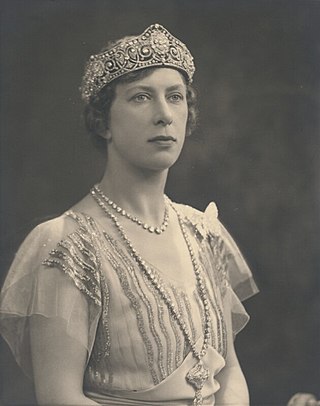
Mary, Princess Royal, was a member of the British royal family. She was the only daughter of King George V and Queen Mary, the sister of Kings Edward VIII and George VI, and aunt of Elizabeth II. In the First World War, she performed charity work in support of servicemen and their families. She married Henry Lascelles, Viscount Lascelles, in 1922. Mary was given the title of Princess Royal in 1932. During the Second World War, she was Controller Commandant of the Auxiliary Territorial Service. The Princess Royal and the Earl of Harewood had two sons, George Lascelles, 7th Earl of Harewood, and The Honourable Gerald Lascelles.
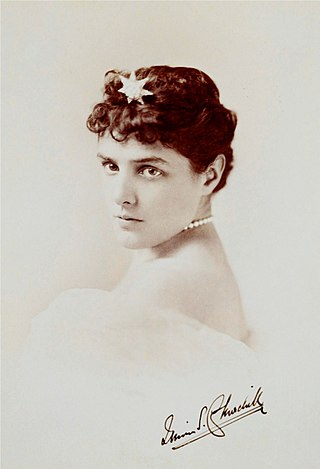
Jeanette Spencer-Churchill, known as Lady Randolph Spencer-Churchill, was an American-born British socialite, the wife of Lord Randolph Churchill, and the mother of British prime minister Winston Churchill.

Alexander Cambridge, 1st Earl of Athlone, was a member of the extended British royal family, as a great-grandson of King George III, a brother of Queen Mary, uncle to the Kings Edward VIII and George VI, and the husband of Princess Alice of Albany. He was a British Army commander, who served as Governor-General of the Union of South Africa and Governor General of Canada.
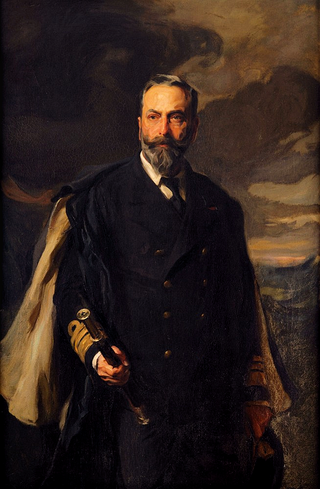
Louis Alexander Mountbatten, 1st Marquess of Milford Haven, formerly Prince Louis Alexander of Battenberg, was a British naval officer and German prince related by marriage to the British royal family.
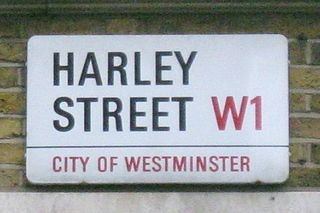
Harley Street is a street in Marylebone, Central London, named after Edward Harley, 2nd Earl of Oxford and Earl Mortimer. Since the 19th century it has housed a large number of private specialists in medicine and surgery.

Dame Freya Madeline Stark was a British-Italian explorer and travel writer. She wrote more than two dozen books on her travels in the Middle East and Afghanistan as well as several autobiographical works and essays. She was one of the first non-Arabs known to travel through the southern Arabian Desert in modern times.

Field Marshal Frederick Sleigh Roberts, 1st Earl Roberts, was a British Victorian era general who became one of the most successful British military commanders of his time. Born in India to an Anglo-Irish family, Roberts joined the East India Company Army and served as a young officer in the Indian Rebellion during which he was awarded the Victoria Cross for gallantry. He was then transferred to the British Army and fought in the Expedition to Abyssinia and the Second Anglo-Afghan War, in which his exploits earned him widespread fame. Roberts would go on to serve as the Commander-in-Chief, India before leading British Forces for a year during the Second Boer War. He also became the last Commander-in-Chief of the Forces before the post was abolished in 1904.

Eliza Maud "Elsie" Inglis was a Scottish medical doctor, surgeon, teacher, suffragist, and founder of the Scottish Women's Hospitals. She was the first woman to hold the Serbian Order of the White Eagle.
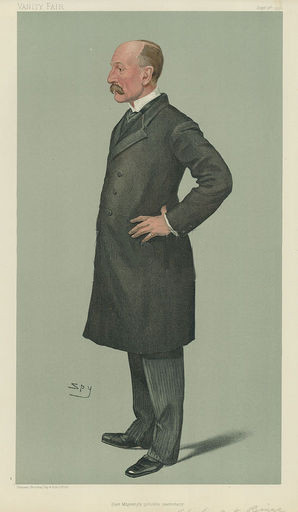
Lieutenant-Colonel Arthur John Bigge, 1st Baron Stamfordham, was a British Army officer and courtier. He was Private Secretary to Queen Victoria during the last few years of her reign, and to George V during most of his reign. He was the maternal grandfather of Lord Adeane, Private Secretary to Elizabeth II from 1953 to 1972.

The Voluntary Aid Detachment (VAD) was a voluntary unit of civilians providing nursing care for military personnel in the United Kingdom and various other countries in the British Empire. The most important periods of operation for these units were during World War I and World War II. Although VADs were intimately bound up in the war effort, they were not military nurses, as they were not under the control of the military, unlike the Queen Alexandra's Royal Army Nursing Corps, the Princess Mary's Royal Air Force Nursing Service, and the Queen Alexandra's Royal Naval Nursing Service. The VAD nurses worked in field hospitals, i.e., close to the battlefield, and in longer-term places of recuperation back in Britain.
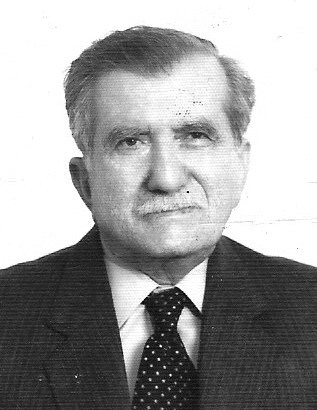
Ruhi al-Khatib was the mayor of East Jerusalem under Jordanian rule.

Dollis Hill House was an early 19th-century house also known as Dollis Hill Villa in today's north London suburb of Dollis Hill. Most of its gardens, south, form Gladstone Park and its owners were the freeholders of the farm estate, north, Dollis Hill Farm which together occupied the eminence, known as Dollis Hill, along with part of Willesden Paddocks in the parish of that name. Guests such as William Ewart Gladstone and Mark Twain were entertained there. The house became derelict after successive fire damage in 1995, 1996 and 2011, the last of which being the basement. As such the building was demolished in 2012 but a performance centre sits on its footprint. Dollis Hill House was an initial-class listed building and reached grade A on the English Heritage Buildings at Risk Register.
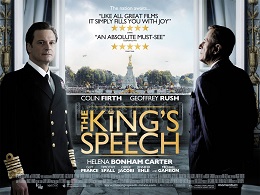
The King's Speech is a 2010 historical drama film directed by Tom Hooper and written by David Seidler. Colin Firth plays the future King George VI who, to cope with a stammer, sees Lionel Logue, an Australian speech and language therapist played by Geoffrey Rush. The men become friends as they work together, and after his brother abdicates the throne, the new king relies on Logue to help him make his first wartime radio broadcast upon Britain's declaration of war on Germany in 1939.
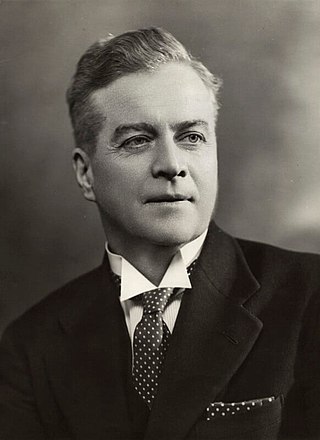
Lionel George Logue, was an Australian speech and language therapist and amateur stage actor who helped King George VI manage his stammer.
Captain Sir Vyvyan Holt was a British soldier, diplomat, and Oriental scholar, who was held captive by North Korea for nearly three years during the Korean War.
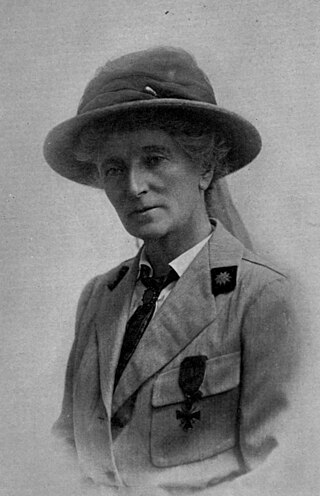
Katherine Mary Harley was a suffragist. In 1913 she proposed and organised the Great Pilgrimage on behalf of the National Union of Women's Suffrage Societies. During the First World War she helped to found and organise the Women's Emergency Corps.

Mary H J Henderson was an administrator with Elsie Inglis's Scottish Women's Hospitals for Foreign Service in the Balkans in World War I, earning five medals. She founded social work and civic groups led by women, in Dundee, Aberdeen and London and served on charitable bodies including Dundee War Relief Fund, and worked for women's suffrage. She was also a war poet.
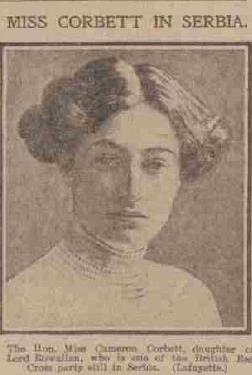
Elsie Cameron Corbett JP was a volunteer ambulance driver and major donor to the World War One Scottish Women's Hospital for Foreign Service in Serbia, She was a prisoner of war in 1916 and won medals from the Serbian and British governments. She was also a justice of the peace, a leading suffragist, temperance supporter, folklorist and diarist.




















